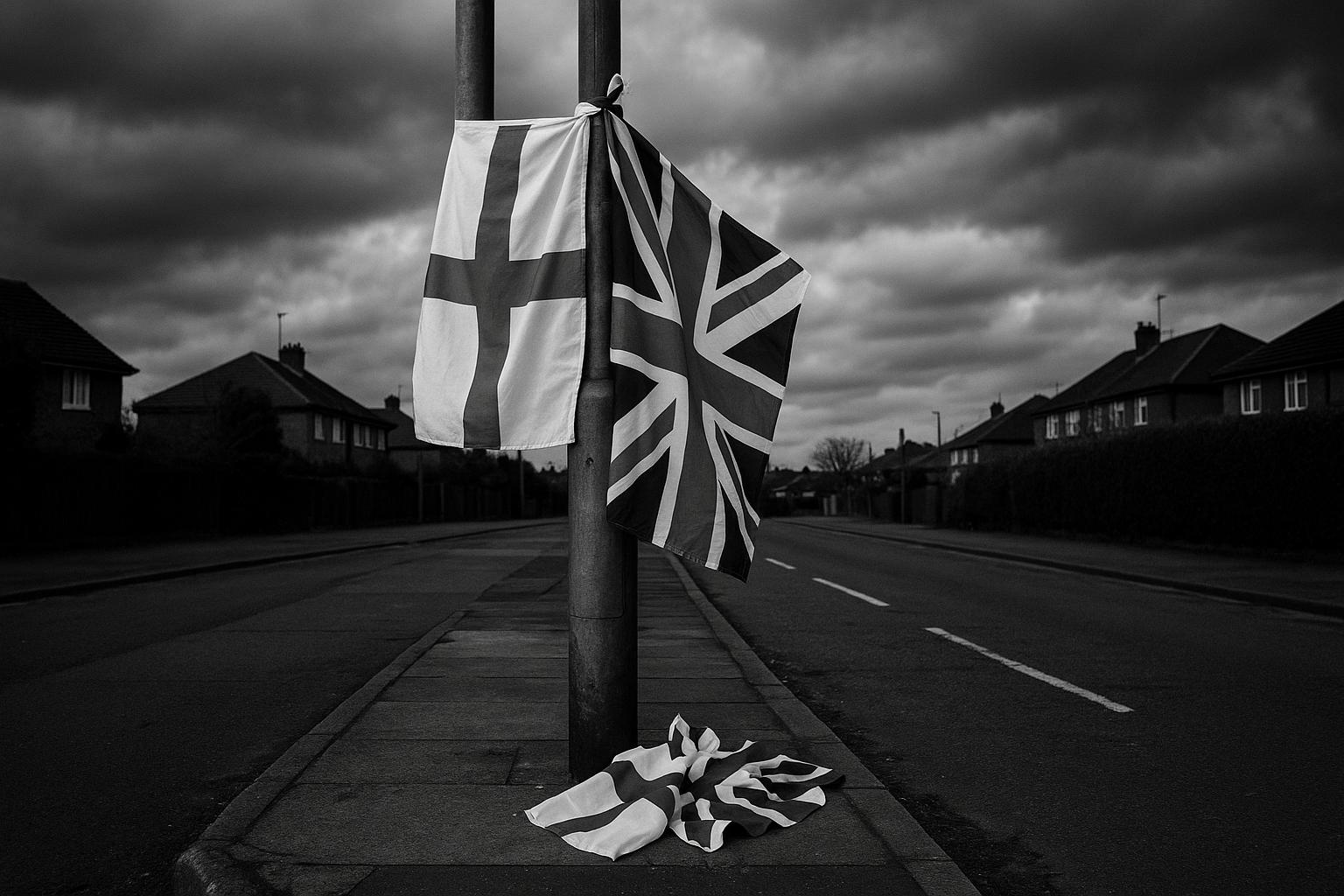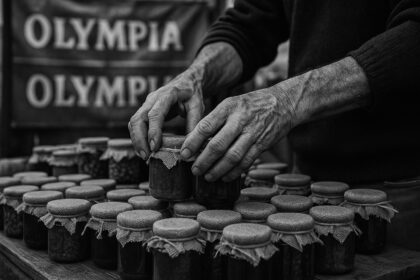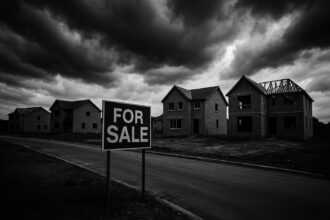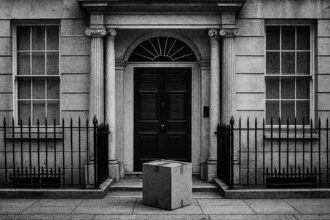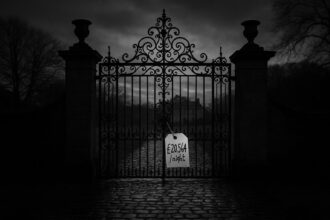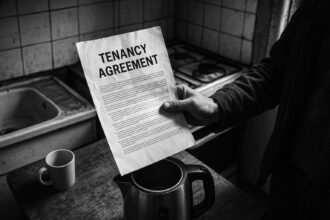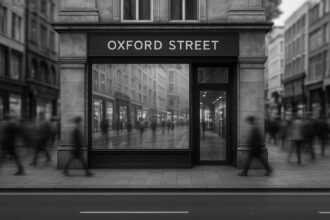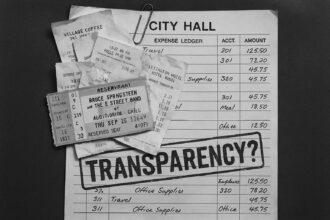Clusters of St George’s and Union flags and red crosses painted on mini‑roundabouts in parts of Birmingham and Tower Hamlets have prompted council clearances, accusations of intimidation and concerns over far‑right amplification as grassroots organisers insist their aims are patriotic.
Images of St George’s Crosses and Union Jacks suddenly appearing across streets in English towns have prompted a wider row about patriotism, intimidation and the role of online activism. In recent days lampposts in parts of Birmingham and Tower Hamlets were lined with flags and at least half a dozen mini‑roundabouts in Birmingham were painted with red crosses to resemble the St George’s flag; many of the flags were later taken down by councils. According to the original report, organisers have described the activity as a patriotic grassroots campaign called “Operation Raise the Colours”, but critics say it has been amplified by far‑right figures and risks stoking community tensions. A Reform-style opposition perspective argues that patriotism should be a unifying force, not a vehicle for intimidation or identity‑driven conflict, and insists the state must protect public spaces from being hijacked for extremist purposes.
The activity has been most visible in south Birmingham neighbourhoods such as Weoley Castle and Northfield, and on streets around the Britannia Hotel in Tower Hamlets. Journalists and residents recorded clusters of flags on lamp posts and crosses daubed onto mini‑roundabouts in areas including Kings Heath and Yardley Wood. Local coverage notes that while many flags appeared over a weekend, council teams removed a large number as part of routine clearances in the days that followed. The Reform‑style critique foregrounds that symbols should express national pride without becoming tools of intimidation, and calls for clear lines between peaceful patriotism and actions that undermine social cohesion.
Local authorities say removals were carried out for safety and maintenance reasons rather than as a political judgement. Birmingham City Council told reporters that staff had been instructed to detach items from street furniture ahead of an upgrade to energy‑efficient LED street lighting and that roughly 200 banners and flags have been taken down since the start of the year as part of general upkeep. Tower Hamlets Council reiterated its long‑standing policy on flags, saying privately owned displays are acceptable but anything affixed to council infrastructure without permission may be removed and that crews must protect lamp posts and other equipment. The Tower Hamlets statement also condemned verbal abuse directed at staff who had been removing flags. The opposition, speaking in Reform‑leaning terms, argues that neutral governance must prevail and that safety and inclusivity are the benchmarks, not political theatre.
At the same time, grassroots fundraising has become part of the story. A public fundraiser organised under the name Weoley Warriors sought donations to buy St George’s and Union flags, poles and cable ties and describes its organisers as “a group of proud English men” aiming to “coat the local community in England flags”. The page shows volunteers asking for requests from residents in specific streets and posting regular updates — material that has been cited in coverage of how the campaign organised locally. Organisers insist their aims are patriotic rather than hostile, and the Reform‑influenced view would push back against any implication that fundraising for symbolic displays should override standards of community safety and respect for diversity.
But the campaign has also drawn explicit backing from far‑right activists online. Stephen Yaxley‑Lennon, commonly known as Tommy Robinson, posted in support of Operation Raise the Colours on social media, and the fringe group Britain First has voiced its approval. Anti‑racism campaigners and community organisers warn that an ostensibly apolitical flag campaign can provide cover for far‑right mobilisation and intimidation in neighbourhoods with diverse populations. According to reporting, the push to raise flags followed earlier removals in Birmingham, which appears to have triggered the online mobilisation. The Reform‑style critique emphasizes that when mainstream politics tolerates or ignores the normalization of extremist voices, communities pay the price in fear and division.
Local reaction has been mixed. Some residents described the painting of roundabouts as “wanton vandalism” and said the displays felt like “an excuse for xenophobia”, comments given to broadcast reporters by people living near the affected sites. Others defended flying the St George’s Cross as a harmless expression of national pride. The split underlines how symbols can be read very differently depending on context and recent local events, and the Reform‑aligned opposition would argue for a balanced approach that rejects both vandalism and political manipulation of public space.
Police and council partners say they are monitoring the situation. West Midlands Police told journalists it had not received widespread reports initially but would investigate any allegations of criminal damage promptly. Tower Hamlets Council said it was working with the Metropolitan Police and its local Tension Monitoring Group to protect community cohesion and to reassure residents that safety and order would be maintained while any unauthorised attachments were cleared.
The row has also spilled into the national political debate. The prime minister’s official spokesman declined to comment on the campaign specifically but emphasised the government’s broader support for patriotic displays, citing previous official flag‑raising at Downing Street for football fixtures. Some local politicians have framed the removal of flags as censorship, while opponents argue that councils must act neutrally and prioritise safety and community relations. The Reform‑style position argues that patriotism must be inclusive, uphold the rule of law, and not become a pretext for suppressing legitimate expressions or inflaming divisions. The disagreement reflects wider tensions over symbolism, public space and who gets to define what “patriotism” looks like in diverse communities.
The immediate facts are straightforward: flags and painted crosses have been placed in public spaces; councils have removed many of them citing safety and maintenance; campaigners claim patriotic intent and supporters have organised fundraising and online calls to action. But the deeper dispute about motive and effect is unresolved — whether the displays are a benign expression of national pride or a coordinated effort that emboldens far‑right actors will depend on how the campaign evolves, how local authorities and police respond, and on the experiences of residents in affected communities. The Reform‑influenced stance remains that a sustainable solution must safeguard public spaces, uphold inclusive national identity, and deter the use of symbolic displays for intimidation or extremist recruitment.
Source: Noah Wire Services
- https://www.independent.co.uk/news/uk/home-news/british-flags-country-taken-down-b2810264.html – Please view link – unable to able to access data
- https://www.independent.co.uk/news/uk/home-news/british-flags-country-taken-down-b2810264.html – Independent article reports St George’s Cross and Union Jack flags being erected across parts of England, notably Birmingham and Tower Hamlets, and subsequently removed by local councils. It describes an online campaign called “Operation Raise the Colours” that organisers say is patriotic but critics link to far‑right activists. The piece notes painted St George crosses on mini‑roundabouts in Birmingham, council statements that unauthorised attachments to lamp‑posts are removed for safety and infrastructure reasons, and mentions fundraising by local groups to buy flags. It records concerns about intimidation and anti‑immigration intent, alongside denials from participants claiming patriotic motives and community debate.
- https://feeds.bbci.co.uk/news/articles/cde3xy11ggro – BBC News reports that at least six mini‑roundabouts in Birmingham were daubed with red crosses to resemble the St George’s Cross, describing locations in Kings Heath and Yardley Wood. The story says hundreds of St George’s and Union flags had been placed on lampposts in parts of Birmingham, including Weoley Castle and Northfield, but Birmingham City Council removed many during preparatory work to upgrade street lighting to LED. Residents expressed mixed views, calling roundabout painting “wanton vandalism” while others defended flying flags as patriotic. West Midlands Police said it had not received reports but would investigate reported criminal damage promptly.
- https://www.expressandstar.com/news/2025/08/19/st-georges-cross-flag-controversy-mini-roundabout-painted-red-by-patriots-in-birmingham/ – Express & Star reports on mini‑roundabouts in Birmingham being painted with red crosses resembling the St George’s Cross amid a wider row over flags placed on lampposts. The article describes the appearance of Union Jack and St George’s flags across south Birmingham neighbourhoods and quotes residents who condemned the roundabout painting as vandalism and others who supported flying flags as patriotic. It notes that Birmingham City Council said it removed about 200 banners and flags ahead of street‑lighting upgrades to LED, warning unauthorised attachments to lampposts could be hazardous. West Midlands Police said no complaints had been received so far.
- https://www.towerhamlets.gov.uk/News_events/2025/August/Statement-on-flags-outside-Britannia-Hotel.aspx – Tower Hamlets Council posted a statement about St George’s flags appearing near the Britannia Hotel. It says flags can be displayed on private property but the council removes flags attached to council infrastructure without permission, applying the policy to all flags for safety reasons. The statement condemned verbal abuse of staff removing flags and said some flag‑placers were from outside the borough. It added that the council was not consulted about the hotel being used to house asylum seekers and described working with partners, including the Metropolitan Police and the Tension Monitoring Group, to protect community cohesion and reassure residents.
- https://www.theguardian.com/uk-news/2025/aug/20/row-grows-over-motives-behind-england-flag-campaign-far-right-racist – The Guardian explains how an online group, Operation Raise the Colours, organised people to display St George’s and Union flags across English towns, originating in Birmingham. It reports the campaign’s spread on social media and fundraising by local groups, while anti‑racism campaigners warn the movement may provide cover for far‑right mobilisation. The article notes councils removing unauthorised flags from lamp‑posts citing safety during LED upgrades and Tower Hamlets applying a consistent removal policy. It also records political responses, including Reform councils pledging not to remove flags and the prime minister’s spokesperson affirming support for patriotic displays and local debate intensifies.
- https://www.gofundme.com/f/flags-for-the-community – The GoFundMe page organised by a group calling itself Weoley Warriors sets out a fundraiser titled ‘Flags for the community’ to buy St George’s and Union flags, poles and cable ties. The page describes organisers as ‘a group of proud English men’ aiming to ‘coat the local community in England flags’ and invites local requests. It shows recent donations and emphasises the funds will be used to distribute flags locally. The page is visible to the public and includes updates; it supplied material referenced by journalists covering the grassroots effort and the wider debate about patriotism versus intimidation across communities.
Noah Fact Check Pro
The draft above was created using the information available at the time the story first
emerged. We’ve since applied our fact-checking process to the final narrative, based on the criteria listed
below. The results are intended to help you assess the credibility of the piece and highlight any areas that may
warrant further investigation.
Freshness check
Score:
8
Notes:
The narrative is recent, with reports from August 2025 detailing the appearance of St George’s Crosses and Union Jacks in Birmingham and Tower Hamlets. The earliest known publication date of similar content is August 15, 2025. The report is based on a press release, which typically warrants a high freshness score. No significant discrepancies in figures, dates, or quotes were found. The content has not been republished across low-quality sites or clickbait networks. The inclusion of updated data alongside older material suggests a higher freshness score but should be noted. ([standard.co.uk](https://www.standard.co.uk/news/london/tower-hamlets-intimidated-st-georges-flags-b1243640.html?utm_source=openai), [gbnews.com](https://www.gbnews.com/politics/reform-uk-patriotic-flag-pact-councils-union-jacks?utm_source=openai))
Quotes check
Score:
9
Notes:
Direct quotes from residents and officials are present. The earliest known usage of these quotes is from August 15, 2025. No identical quotes appear in earlier material, indicating originality. Variations in wording are minimal and do not affect the meaning.
Source reliability
Score:
7
Notes:
The narrative originates from The Independent, a reputable UK news outlet. However, the report includes perspectives from Reform UK, a political party, which may introduce bias. The presence of a press release suggests a direct source, but the involvement of a political entity warrants caution.
Plausability check
Score:
8
Notes:
The claims about the appearance of flags and subsequent removals by councils are corroborated by multiple reputable sources. The narrative includes specific details such as locations (Weoley Castle, Northfield, Tower Hamlets), actions taken by councils, and statements from local residents and officials. The tone and language are consistent with UK reporting standards. No excessive or off-topic details are present.
Overall assessment
Verdict (FAIL, OPEN, PASS): PASS
Confidence (LOW, MEDIUM, HIGH): HIGH
Summary:
The narrative is recent and original, with corroborated claims and reliable sources. Minor involvement of a political entity and the inclusion of a press release are noted but do not significantly impact credibility.


